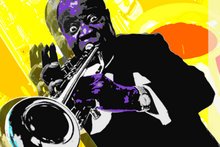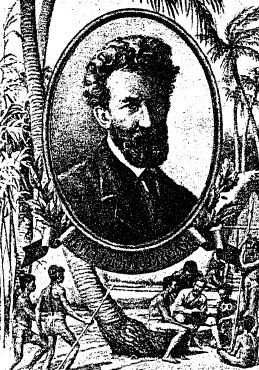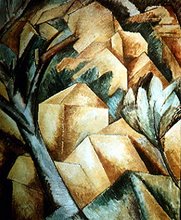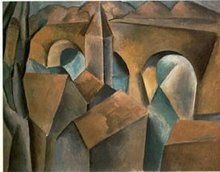
Pagan ritual in the center of Taipei city
About two weeks ago I was so lucky to participate in the pagan ritual in the center of modern Taipei city. My recently research of Negritos and their former existence in Taiwan evidence brought me to the studying of Philippines ethnology.
According to many researches the Pygmies (or “Negritos” which, in Enlish, means “little black people”) came to the Philippines from the south by landward migrations across the land bridges about 25,000 to 30,000 years ago. They became the aboriginal inhabitants of the Philippines, and their descendants, still exist there.
Later from the mainland of Southeasten Asia the first seafaring immigrants - the Indonesians (which means “Island Indians”) - came in rough-hewn sailboats to the Philippines shores. They came in two main waves of migration, the first wave dating about 5,000 years ago and the second wave about 3,500 years ago. It is said that they belonged to the Mongolian race but with Caucasic affinities.
The Indonesians fought with the Negritoes for ownership of the land. Possessing a higher type of culture and armed with better weapons, the Indonesians triumphed over their Negrito opponents. The Indonesians with whom the Negritoes afterwards intermingled in various degrees drove the “little black people” to the interior regions.
According to D.P Barrows (D.P. Barrows. p. 5) “the Negritos have retired from many places where they lived when the Spaniards first arrived”, but by the beginning of 20th century there were still “several thousand in Luzon, especially in the Cordillera Zambales, and in the Sierra Madre range on the Pacific coast, and in the interior of Panay and Negros, and in Surigao of Mindanao.” Now the Negritoes, popularly known in Philippines as the Agta or the Aeta, live in the mountainous areas of Luzon, Negros, Panay, and Mindanao.
The last Asian immigrants to colonize the Philippines during prehistoric times were the brown-skinned, maritime Malays. The Indonesians were in tern driven by the Malays from the coastlands and open plains.
Gregorio F. Zaide cites (G. F. Zaide. 1957, 24-25) Professor Blumentritt, who says, “The ancient Malays reached the Philippines in three main migratory waves. The first wave arrived at about 200 B.C., representing the headhunting Malays – the ancestors of the Bontoks, Ifugaos, and Tinggians of Northern Luzon. The second wave came after the start of the Christian era, from 100 A.D. to the 13th century A.D., representing the alphabet-using Malays – the ancestors of the Bisayans, Tagalogs, Ilokanos, Bikols, Pampangans, and other Christian Filipinos. And the third wave arrived between the 14th and the 16th century A.D., representing the Mohammedan Malays – the ancestors of the present-day Moros.”
The people, whom I so luckily and surprisingly met in the park near Minquan W. Rd. MRT station in Taipei City called themselves Igorots and were the descendants of the ancient headhunting Malays of Philippines.
Igorot is the general name for the people of the Cordillera region, in the island of Luzon. Some Igorot groups formerly practiced headhunting. The Igorots are grouped into six ethno-linguistic groups, the Bontoc, Ibaloi, Ifugao, Isneg (or Apayao), Kalinga, and the Kankana-ey.
The Bontocs, who live on the banks of the Chico River, were once well-known because of their headhunting practices. From ancient times they did perform a circular rhythmic dance acting out certain aspects of the hunt, always accompanied by the bronze gong. There was no singing or talking during the dance drama. It was a serious but plesurable event for all concerned, including the children. In the center of the modern Taipei I did take part in such kind of the dance drama with the Bontocs, who work in Taiwan and have cultural and religious ceremonies in the night park almost every Sunday. It was amazing! one of the participants even gave me a bronze gong to try utter the sound.
Historically a hereditary class of priests hold various monthly ceremonies. I was lucky to talk with one of them, about 35-years old intellectual, who studies in Hualian the culture of Amis tribe.
Nowadays many Igorots as other Filipinos have left their mountain homes to seek better opportunities all over the world. Like many Diasporas, they maintain their cultural heritage in foreign lands by gathering together in common bond. In the night park by a lucky chance I met the members of the Igorots Diaspora organization which purpose is to keep their traditions alive.
1. David P. Barrows. 1926. History of the Philippines. New York. Copyright 1905 by David P. Barrows.
D.P Barrows was the Professor of Political Science, University of California;Formerly City Superintendent of Schools, Manila, 1900-01;Chief of the Bureau of Non-Christian Tribes of the Philippines, 1901-03;Director of Education for the Philippines, 1903-09;Formerly President of the University of California.
2. Gregorio F. Zaide. 1957. Philippine Political and Cultural History. Vol. I. The Philippines Since Pre-Spanish Times. Manila: Philippine Education Company.
 William Robertson Smith (1846 – 1894) was a Scottish orientalist, Old Testament scholar, professor of divinity, and minister of the Free Church of Scotland. He is also known for his book Religion of the Semites, which is considered a foundational text in the comparative study of religion. Religion of the Semites is an account of ancient Jewish religious life which pioneered the use of sociology in the analysis of religious phenomenon.
William Robertson Smith (1846 – 1894) was a Scottish orientalist, Old Testament scholar, professor of divinity, and minister of the Free Church of Scotland. He is also known for his book Religion of the Semites, which is considered a foundational text in the comparative study of religion. Religion of the Semites is an account of ancient Jewish religious life which pioneered the use of sociology in the analysis of religious phenomenon.













